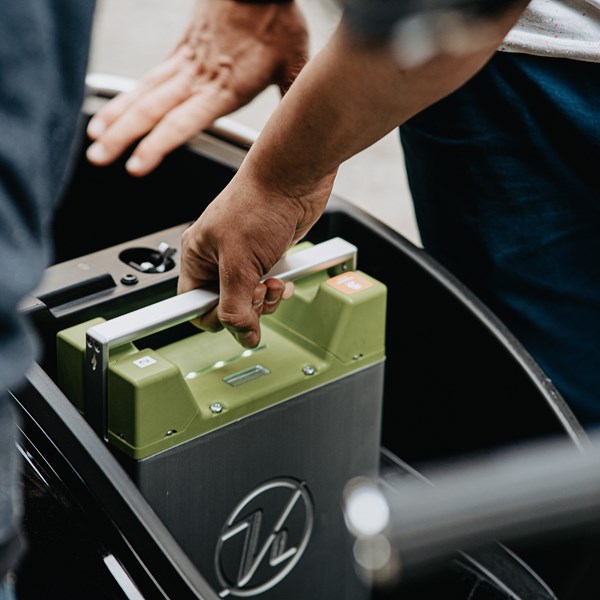This article was first published by BEST Magazine and can be found here.
The Patent Offices around the world typically do a good job of examining patent applications so that only the ones that meet the requirements, including novelty and inventiveness, make it through to grant. However, this is not always the case.
The patent application examination process will involve a search for prior published documents that relate to similar technology. Based on what is found, a patent examiner will make a judgement on whether the claims of the patent being examined define a device, method or material that is new and not obvious. The quality of the search therefore dictates the quality of the decision to allow or refuse the patent application. Thus, if the most relevant prior published documents are not found, then the judgement by the Patent Office to grant a patent may be ill-founded.
Ben Lincoln considers the challenges being made against battery patents.
When a patent is granted there is a presumption that it is valid and it is upon a challenger to show that the patent has been erroneously granted in a procedure known as opposition or invalidation.
There can be a lot at stake if the parties are also accusing one another of patent infringement. In this case, invalidating a patent can stop it being used against you for infringement. However, if the invalidation fails or only partially succeeds, then it is likely the infringement action will proceed.
As has been recently reported, CALB lost a battery patent infringement lawsuit brought by CATL. Significant sums for damages and costs were ordered. However, the court action involved several challenges to the validity of the patents held by CATL. Thus CALB were embroiled in attempting to show that the patents were invalid while CATL were taking action for infringement of those patent rights.
This shows that monitoring the patents of your competitors and making assessments of their validity is important. It may be in your interest to challenge the patents before they are enforced by their owners.
Challenging those rights with the aim of removing them from the register is not the only benefit. Starting a challenge to the validity may force the patent owner to amend the scope of their rights giving you greater clarity about the scope of the existing patent. If you suspect that the patent will be enforced against you, invalidation, in some countries, may delay those possible patent infringement proceedings. Also, mounting a challenge may force a competitor to start negotiating a mutually beneficial way forward, for example by offering you the option of obtaining a licence under the patent in exchange for ending the challenge.
ATTACKING PATENTS IN EUROPE
A European patent has the potential to protect a product and/or processes in forty-four territories. It is therefore a powerful right but the risks posed by a competitor’s European patents can be removed or mitigated in all of those territories by a single invalidity procedure - the European Patent Office (EPO) opposition procedure.
In Europe there is a nine month period after the grant of a European patent where an opposition may be started. Fig. 1 shows the typical timeline of a European opposition, which may take 1-2 years to complete.

Fig. 1: Typical timeline of a European opposition.
Before starting an opposition, you should have a good understanding of what your commercial objectives are. For example, if you know the patentee’s commercial interests lie in an area that is different from your own, there may be a possible win-win settlement opportunity. It may be best to obtain a licence giving you freedom to pursue your commercial interests in return for you either withdrawing your opposition or not opposing the patent in the first place. Alternatively, you might simply agree not to continue to oppose a patent if the claims are limited to the point they no longer pose a risk to your commercial plans.
To begin a successful opposition, it is advisable to submit all of the evidence you may wish to rely upon at the start of the procedure. Therefore, the first stage in preparation for an opposition is to gather evidence. That evidence may comprise prior-published documents that show that the patent covers something that was previously known, or that the invention is obvious. In some cases, it may be necessary to conduct experiments and obtain witness testimony and/or evidence of prior use to support the invalidity arguments you want to use in your opposition. Further, the evidence may question whether the specification of the patent discloses the invention in a sufficiently clear and complete manner for the purported invention to be practised. Yet further, it may be alleged that the patent owner added information to the patent application during its prosecution, which is not allowed.
After the nine month opposition procedure has expired, action can be taken in the national courts of Europe or, in due course, the Unified Patent Court.
WHO IS MAKING USE OF THE EPO OPPOSITION PROCEDURE?
EP3163656B is a patent directed to “Composite Positive Electrode Active Material, Positive Electrode Including The Same, And Lithium Battery Including The Positive Electrode” owned by Samsung SDI Co., Ltd. It was granted in December 2018 and opposed in September 2019 by Haldor Topsoe A/S. As evidence of the patent not being new, Haldor Topsoe cited a Chinese patent, three US patent documents, two international patent applications and a scientific paper all having an earlier publication date.
In response, Samsung submitted arguments and numerous alternative patent claim definitions to narrow down the protection afforded by the patent to something new over the newly cited prior art. The opposition ultimately failed and the patent was upheld, but Haldor Topsoe appealed in March 2021. At appeal, the appeal board decided that the patent was only allowable if the claims were narrowed. Accordingly, it was ordered in November 2022 that the patent be maintained with a claim limited such that the composite positive electrode material with formula xLiMO2.y LiMe2O4 has a composition where x is in a range 0.75 to 0.99 and y is in a range of 0.01 to 0.25 and M is cobalt.
EP3683871B relates to “Negative Electrode Active Material For Lithium Secondary Battery And Lithium Secondary Battery Comprising Same” in the name of LG Energy Solution, Ltd. An opposition was filed in the name of a German Patent Law firm, potentially to hide the identity of the real opponent. The opposition challenges the inventiveness of the claims using seven prior published patent documents. The opposition is ongoing and a final decision is awaited.
EP2468609B is a patent entitled “System for absorbing and distributing side impact energy utilizing an integrated battery pack” in the name of Tesla, Inc. The patent was opposed by four separate entities: Joachim Rachfahl (who is the inventor listed on another patent entitled “Safety sill for a structural frame bearing a battery in the event of a side impact”); Johnson Controls GmbH; Hella KGaA Hueck & Co.; and Robert Bosch GmbH. The opposition was partially successful and Tesla, Inc were required to limit their claim to state that their “energy absorbing and distributing side impact system for a vehicle, comprising a battery pack enclosure” included cross-members having a cavity that contained a liquid.
CHALLENGING GRANTED PATENTS IN THE USA
The Patent Trial and Appeal Board is a tribunal within the United States Patent and Trademark Office that can decide patentability questions for issued patents raised by third parties in proceedings called AIA trials. Alternatively cases can be brought at the Federal District Court.
Inter partes review is a trial proceeding conducted at the Board to review the patentability of one or more claims in a patent.
In the field of battery technology, the court appears well used. In March 2023, a decision was handed down allowing Eve Energy Co., Ltd’s claim to go ahead against VARTA Microbattery GmbH. Eve Energy are challenging the claims of VARTA’s US Patent No. 11,024,905 B2 relating to button cells. It is explained that the patent relates to “button cells having a housing consisting of two metal housings halves” that contain “a wound electrode separator assembly” and the two housing halves termed the “housing cup” and the “housing top” are separated by an electrically insulating seal to form “a housing having a plane bottom region and a plane top region parallel thereto.” Arranged inside the housing is at least one positive electrode and at least one negative electrode, “each in the form of flat electrode layers” that are “preferably connected to one another by at least one flat separator.” This electrode assembly is provided in the form of a winding that is “arranged such that its end sides face in the direction of the plane bottom region and the plane top region of the housing.”. The patent is challenged on the basis of a Chinese patent document and two Japanese patent documents.
CHALLENGING GRANTED PATENTS IN CHINA
In China, the Patent Re-examination Board (PRB) hears applications for invalidation of patent rights. Thus, from the date of the announcement of the grant of a competitor’s patent right, any entity may submit a request for invalidation requesting the PRB to declare the patent right invalid.
BE READY TO ATTACK
Thus, while CATL and CALB have hit the headlines for their battery battle, a review of the various invalidation procedures around the world shows that many more challenges are ongoing. In Europe, a search of the patent register reveals 239 past or present oppositions against patents that include the term “battery” in their title. Therefore, it is a wise strategy to assess the risk and be ready to make the first move and invalidate a patent before the competitor attempts to enforce it against you.






